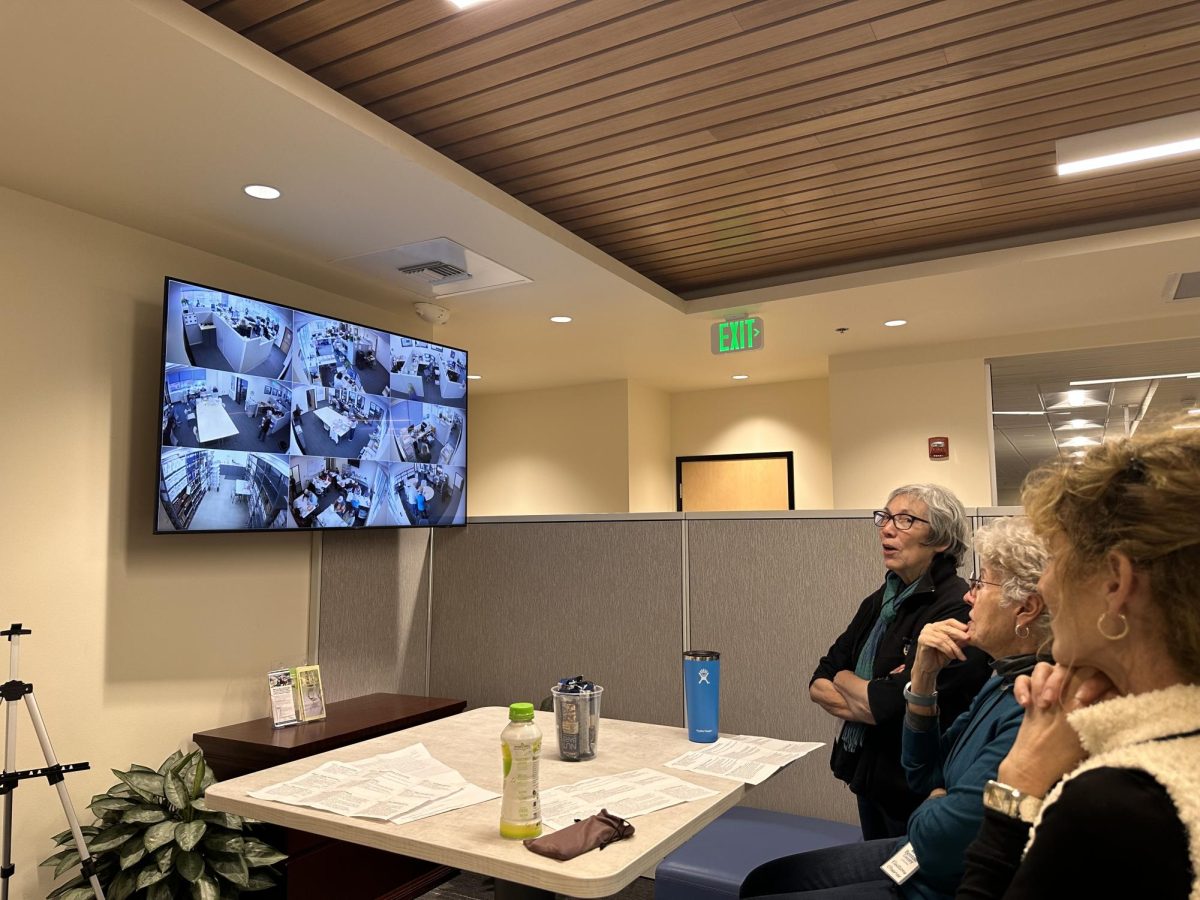The line started at the counter and, at times, stretched down the stairs.
People queued at the Benton County Elections Office on election night to request replacement ballots, while the ballot-counting process was already underway.
According to Anne Thwaits, Benton County’s public information officer, those with ballots that were damaged or lost can come to the election office until 8 p.m. today to request a replacement.
“There are multiple checks in place to make sure every person can vote once and only once,” Thwaits said.
The election office also had several private booths with copies of Oregon’s Voters’ Pamphlet, so those with replacement ballots could fill them out on the spot.
According to Thwaits, the election office has its own ballot drop box, as well as a drive-up ballot box in the parking lot.
As a pair of ballot collectors carried a sealed box of ballots inside, a few blue envelopes could be seen mixed in. These are Linn County ballots, and according to Thwaits, Benton County and Linn County have an agreement to send ballots to one another should they accidentally be sent the wrong county’s ballot.
Thwaits said that this agreement helps alleviate confusion in Albany, which sits in both counties.
In a corner of the lobby, election observers watch a TV playing a video feed of nine different rooms. Each room is a different stop in the vote-counting process, and every place a ballot is handled is monitored by cameras.
According to Thwaits, political parties can submit a list of as many people as they want to be trained as election observers. Once ballots begin to be counted, observers are there to watch the process, with one to two present from each party.
Watching the monitor today were election observers Charlene Hall, Corey Arentz and Suzanne Ortiz.
Before a ballot envelope is opened, the signature on the outside is checked against the voter’s signature on file, according to Thwaits.
After this, ballots are counted and then opened with a machine before being taken to the board room. Here, a bipartisan group of volunteers remove ballots from envelopes and inspect them to make sure the tabulating machine can read them, according to Ortiz.
“If there are two Democrats at (a) table, there are two Republicans,” Ortiz said.
According to Thwaits, ballots must be filled out with blue or black ink, and those marked with pencil get re-marked in the board room. According to Ortiz, the tabulating machine can’t pick up pencil marks.
Thwaits said the goal is to capture “voter intent.”
“I was impressed … how much effort goes into making sure little nuances the machine wouldn’t catch are still captured,” Thwaits said. “They have humans actually go through and read and make sure that any notes the voter put on there are also captured.”
Any corrections made to the ballot are made in a red pen, according to Ortiz.
From here, ballots go to the vote tabulation room, where a tabulation machine records votes.
A number of security measures are in place here. According to Ortiz, the computer used to calculate results is not connected to the internet, while Thwaits said data can only be retrieved from the tabulation machine with a special encrypted USB drive.
At the time of writing, 44,858 ballots had been returned in Benton County, according to the Oregon Secretary of State website. There are 62,004 eligible voters in the county, meaning voter turnout currently sits at 72.3%.
There are 15 ballot boxes across Benton County, and a list is available on the county website.


















































































![Newspaper clipping from February 25, 1970 in the Daily Barometer showing an article written by Bob Allen, past Barometer Editor. This article was written to spotlight both the student body’s lack of participation with student government at the time in conjunction with their class representatives response. [It’s important to note ASOSU was not structured identically to today’s standards, likely having a president on behalf of each class work together as one entity as opposed to one president representing all classes.]](https://dailybaro.orangemedianetwork.com/wp-content/uploads/2025/03/Screenshot-2025-03-12-1.00.42-PM-e1741811160853.png)

























